
“No Clear Sky” is a gripping, character-driven drama set against the bleak backdrop of Parkersburg, West Virginia – a town suffocating under the weight of economic decay, systemic failure, and personal despair. The series explores the intertwined lives of individuals struggling to survive amidst addiction, corruption, and broken institutions. As their paths collide, each character is forced to confront their own moral boundaries, revealing the fragile line between victim and perpetrator in a society that offers no easy redemption.
Immerse yourself in the haunting atmosphere of "No Clear Sky" with the original theme song, "Ghosts of Parkersburg", crafted by J. Farr.
Press play below to experience the mood and tone of the show.

Character Study Summary: Ethan McAllister
Overview
Ethan McAllister is a complex character defined by his internal conflicts, emotional vulnerability, and the oppressive environment in which he exists. His journey is marked by the struggle to reconcile his ambitions with the harsh realities of his life in Parkersburg. Ethan embodies the tension between hope and despair, making him a compelling and relatable figure for the audience.
Emotional Core
Physicality and Body Language
Voice and Speech Patterns
Inner World
Key Relationships
Character Arc
Performance Notes
Casting Considerations
Ethan McAllister is a character defined by contradiction—a young man striving for redemption while battling the shadows of his choices. His story is a testament to the human capacity for both resilience and self-destruction.

Character Study: Maddie Taylor
Overview
Role in the Series:
Maddie Taylor is a deeply empathetic and resilient character. As a single mother struggling to provide a better life for her young daughter, Lily, Maddie’s journey explores themes of motherhood, survival, and quiet strength. She embodies perseverance against relentless odds, highlighting both the systemic and personal challenges faced by those on the margins.
Backstory:
Personality:
Physical Appearance:
Subtextual Traits for the Actor:
Casting Guide
Essential Qualities:
Potential Actors:
Key Character Moments in Season One
Motivational Notes for the Actor
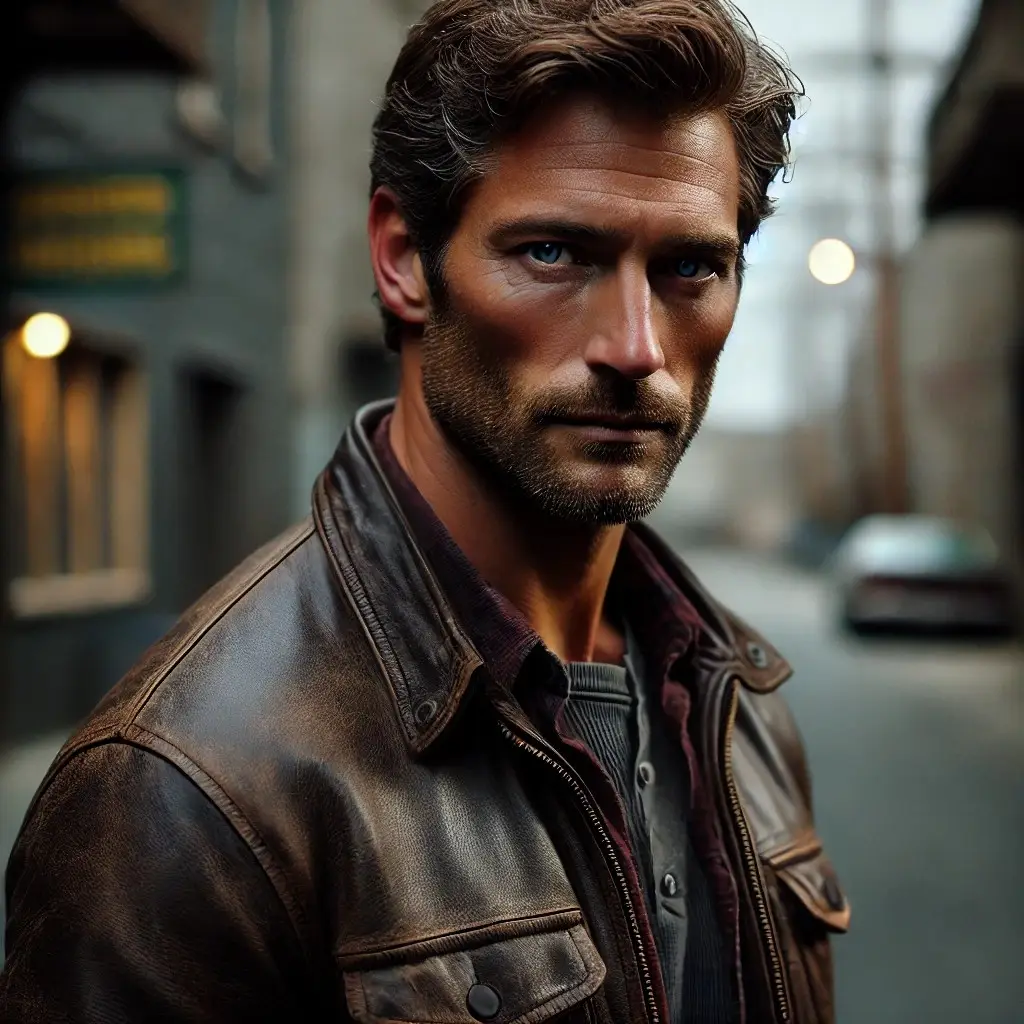
Character Study: Liam Brody
Overview
Role in the Series:
Liam Brody is a principled and dedicated police officer in his late 30s, grappling with a failing marriage and a strained relationship with his younger brother, Ryan. He represents the moral backbone of the show but is constantly at odds with the systemic failures of his job and his personal guilt over Ryan’s downward spiral.
Backstory
Personality
Physical Appearance
Subtextual Traits for the Actor
Casting Guide
Essential Qualities:
The actor must convey a rugged, lived-in authenticity—a man shaped by years of hardship but still holding onto hope. Charisma and depth are crucial, as Liam balances being a relatable protagonist with a morally driven but flawed character. Should have chemistry with the actors playing Ryan and Erin to highlight his strained yet protective relationships.
Potential Actors:
Key Character Moments in Season One
Motivational Notes for the Actor
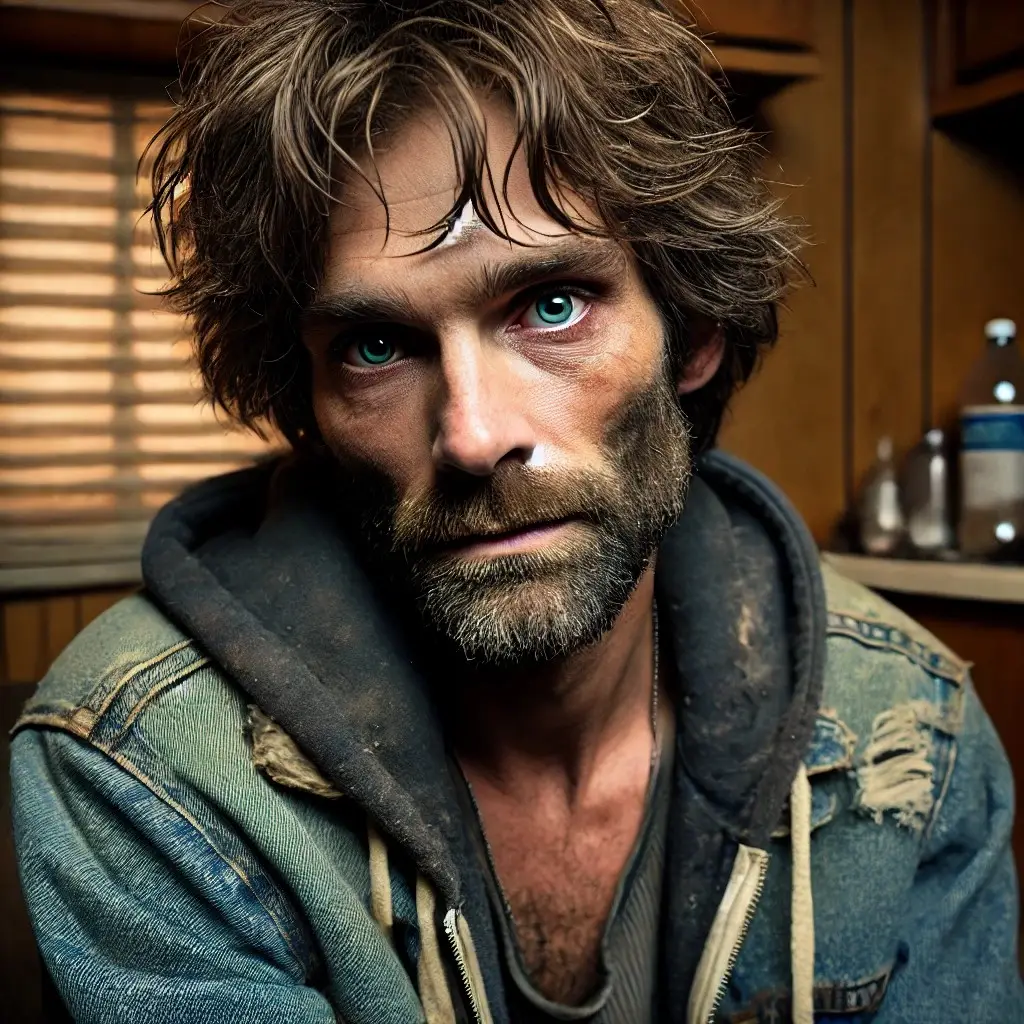
Character Study: Ryan Brody
Overview
Role in the Series:
Ryan Brody is Liam Brody’s younger brother, a man in his early 30s whose life has spiraled into addiction and petty crime. His character embodies the human cost of systemic failures, representing the fragility and tragedy of those caught in cycles of despair.
Backstory:
Personality:
Physical Appearance:
Subtextual Traits for the Actor:
Casting Guide
Essential Qualities:
Potential Actors:
Key Character Moments in Season One
Motivational Notes for the Actor

Character Study: Erin Caldwell
Overview
Role in the Series:
Erin Caldwell is a paramedic in her mid-30s, whose relentless dedication to saving others is juxtaposed with her inability to confront her own struggles. Erin’s character is a portrait of burnout, quiet despair, and the toll of systemic neglect on first responders.
Backstory:
Personality:
Physical Appearance
Subtextual Traits for the Actor
Casting Guide
Essential Qualities:
Potential Actors:
Key Character Moments in Season One
Motivational Notes for the Actor
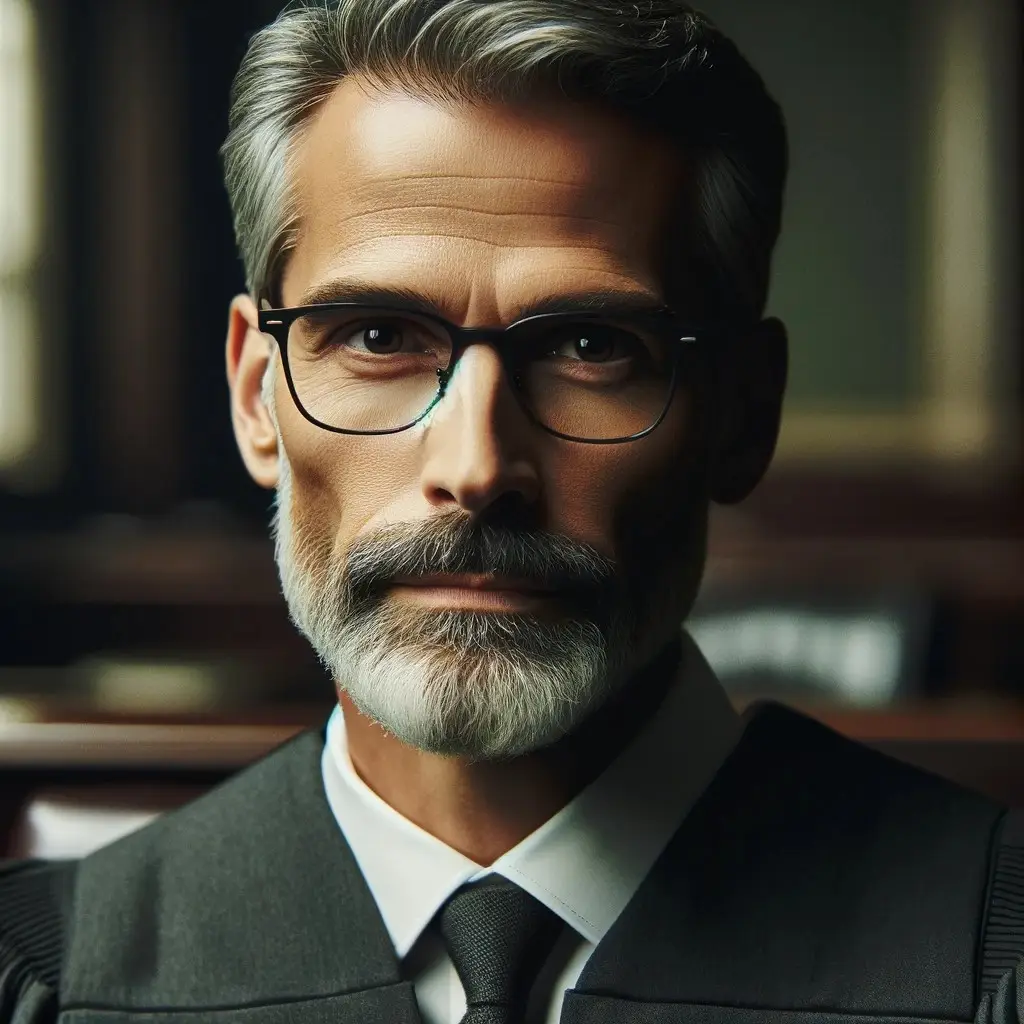
Character Study: Judge William Sanders
Overview
Judge William Sanders, in his early 50s, is a man burdened by the weight of his decisions both on and off the bench. A widower, he struggles to connect with his rebellious teenage daughter, Natalie, while navigating the demands of his high-profile role in Parkersburg. Sanders embodies a blend of moral integrity, emotional repression, and simmering frustration, which informs his professional and personal choices.
Backstory
Character Traits
Key Relationships
Casting Guide
Ideal Casting Options:
Key Acting Notes:
Key Scenes for Reference

Character Study: Frank “Slick” Harrington
Overview
Role in the Series:
Frank “Slick” Harrington is the sleazy, opportunistic owner of the strip club where Maddie works. As a manipulative figure who thrives on exploiting vulnerability, Frank embodies the systemic and personal oppression that Maddie—and others like her—struggle against. His presence adds tension and conflict, highlighting the darker undercurrents of economic desperation.
Backstory:
Personality:
Physical Appearance:
Subtextual Traits for the Actor:
Casting Guide
Essential Qualities:
Potential Actors:
Key Character Moments in Season One
Motivational Notes for the Actor

Character Study: Natalie Sanders
Overview
Role in the Series:
Natalie Sanders serves as the embodiment of youthful defiance and vulnerability, wrestling with her identity as the daughter of a respected judge. Her character explores themes of rebellion, neglect, and the longing for genuine connection. As she navigates the complexities of adolescence, her strained relationship with her father becomes a central emotional thread of the series.
Backstory:
Personality:
Physical Appearance:
Subtextual Traits for the Actor:
Casting Guide
Essential Qualities:
Potential Actors:
Key Character Moments in Season One
Motivational Notes for the Actor

Character Study: Jack Bowman
Overview
Role in the Series:
Jack Bowman is a symbol of Parkersburg’s working-class resilience, embodying the struggles and grit of small-town America. As the owner of Bowman’s Hardware, Jack’s character provides a grounded, blue-collar perspective on the town’s economic and social decline. His interactions reflect the erosion of traditional values under the weight of systemic failure.
Backstory:
Personality:
Physical Appearance:
Subtextual Traits for the Actor:
Casting Guide
Essential Qualities:
Potential Actors:
Key Character Moments in Season One
Motivational Notes for the Actor

Character Study: Alex (EMS Partner)
Overview
Role in the Series:
Alex is a dedicated and level-headed paramedic partnered with Erin Caldwell. While not the series’ focal point, Alex serves as a vital secondary character, providing a stabilizing presence and offering viewers a grounded perspective on Erin’s struggles. His character highlights the emotional toll of working in emergency services, acting as both a confidant and a mirror to Erin’s spiraling decline.
Backstory:
Personality:
Physical Appearance:
Subtextual Traits for the Actor:
Casting Guide
Essential Qualities:
Potential Actors:
Key Character Moments in Season One
Motivational Notes for the Actor
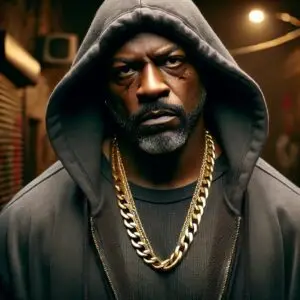
Character Study: Marcus “Big Slim” Redding
Overview
Role in the Series:
Marcus “Big Slim” Redding serves as the embodiment of power, control, and the corrosive nature of ambition within the criminal underworld. As a key antagonist, Slim’s presence looms large, both literally and metaphorically, as he manipulates those around him to maintain his dominance. His character explores themes of loyalty, fear, and the fragile nature of power.
Backstory:
Personality:
Physical Appearance:
Subtextual Traits for the Actor:
Casting Guide
Essential Qualities:
Potential Actors:
Key Character Moments in Season One
Motivational Notes for the Actor
Key Relationships
Character Evolution
Slim begins as an untouchable figure, a master manipulator with an iron grip on his world. But as pressure mounts from law enforcement, internal betrayals, and his own ambition, Slim’s facade cracks. His calculated decisions grow more reckless, his paranoia sharper, and his vulnerabilities more apparent. By the season’s end, Slim isn’t just fighting to maintain power—he’s fighting to survive.
Actor’s Guide to Performance
Slim is more than a drug kingpin; he’s a study in how power corrupts, isolates, and ultimately destroys from within.

Character Study: Lily Taylor
Overview
Name: Lily Taylor
Age: 7
Role in the Series: Lily serves as the emotional heart of the series, symbolizing innocence and hope amidst the struggles of addiction and poverty. Her interactions with other characters, especially her mother Maddie, highlight the resilience and vulnerability of children living in unstable environments.
Background:
Personality:
Physical Appearance:
Subtextual Traits for the Actor:
Casting Guide
Essential Qualities:
Potential Actors:
Key Character Moments in Season One
Motivational Notes for the Actor
Symbolism
Lily represents hope, resilience, and the enduring power of love amidst adversity. Her character serves as a reminder of the lasting impact adult decisions have on children and the fragile yet powerful nature of childhood innocence.
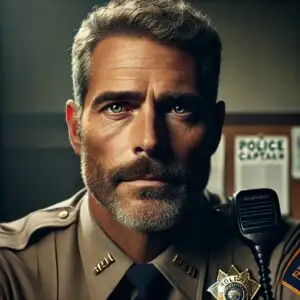
Character Study: Captain Michael “Mike” Harlow
Overview
Name: Michael “Mike” Harlow
Age: Mid-50s
Physical Description:
Captain Harlow is a stocky man with a commanding presence, his short-cropped salt-and-pepper hair and deep-set hazel eyes radiating authority and weariness. His face is lined with the stresses of a long career in law enforcement, marked by a subtle scar running across his jawline. He often wears a neatly pressed uniform or plainclothes with a functional edge—dark slacks, a button-up shirt, and a leather shoulder holster. His appearance reflects a man who values order and tradition but is not immune to the pressures of his role.
Personality Overview
Captain Harlow is pragmatic, disciplined, and deeply committed to the institution of law enforcement, often to the detriment of his personal relationships and mental well-being. While he is generally fair and supportive of his team, he is also burdened by the political and bureaucratic challenges of his position, which sometimes puts him at odds with officers like Liam Brody, who push against the constraints of the system.
Harlow is a realist, keenly aware of the limitations of his department in a town like Parkersburg, plagued by systemic issues like poverty, addiction, and corruption. He struggles to maintain morale among his officers while managing the expectations of the public, city officials, and his own conscience.
Background and History
Motivations
Strengths
Weaknesses
Relationships
Emotional Core and Arc
Harlow’s journey in No Clear Sky revolves around reconciling his belief in the system with its evident failures. As Liam’s investigations expose deeper corruption, Harlow must question whether his adherence to procedure truly serves the people of Parkersburg. By the season’s end, he faces the choice of stepping outside his comfort zone, risking his career for meaningful change.
Casting Guide
Essential Qualities:
The actor should convey authority and gravitas while revealing the vulnerability beneath Harlow’s stern exterior. Must balance the role of a steadfast leader with a flawed, conflicted man.
Potential Actors:
Key Character Moments in Season One
Motivational Notes for the Actor

Character Study: Cheryl (Judge Sanders’ Assistant)
Overview
Cheryl is Judge Sanders’ assistant, an experienced professional in her late 40s to early 50s. She is diligent and efficient, often juggling the heavy workload of the courthouse with Sanders’ growing emotional struggles. Though she maintains a composed and professional demeanor, her occasional moments of empathy and dry wit make her a grounding presence in the judge’s life. Cheryl’s subtle pushbacks and insightful observations provide a mirror to Sanders, challenging him to confront his shortcomings without openly rebelling against his authority.
Key Traits
Appearance
Key Relationships
Motivations
Key Scenes in Season One
Tips for the Actor
Casting Guide

Character Study: Angela Pruitt
Overview
Name: Angela Pruitt
Age: Mid-40s
Occupation: Director of the Parkersburg Community Center
Role in the Series:
Angela Pruitt serves as the compassionate anchor within the community, embodying hope and resilience amidst systemic struggles. As the director of the Parkersburg Community Center, she represents both the emotional heart of the series and the challenges faced by those trying to enact meaningful change within broken systems. Her interactions with the main characters showcase her unwavering belief in the potential for personal growth, even in the face of adversity.
Appearance
Personality
Backstory
Angela grew up in a working-class family in Parkersburg, witnessing the town’s economic decline firsthand. Determined to make a difference, she worked her way through college and returned to her hometown with a mission to improve the lives of its residents. Her deep ties to the community fuel her passion, as she believes small acts of support can ripple outward to create lasting change.
Relationships to Main Characters
Goals and Motivations
Angela is driven by a profound desire to make tangible improvements in Parkersburg. Her ultimate goal is to expand the community center’s reach through increased funding, partnerships, and innovative programs aimed at uplifting struggling families. Her work is not just a job—it’s a personal mission to combat the despair that threatens to engulf her community.
Key Character Moments in the Series
Subtextual Traits for the Actor
Casting Guide
Essential Qualities:
Potential Actresses:
Motivational Notes for the Actor
Conclusion
Angela Pruitt embodies the heart of Parkersburg’s resilience. Through her compassion, struggles, and unwavering dedication, she serves as a symbol of hope in the series, grounding the narrative with her steadfast belief in the power of community and human connection.

Character Study: Ms. Hannah Porter
Overview
Name: Ms. Hannah Porter
Age: Early 40s
Role in the Series: Lily’s teacher, serving as a symbol of stability and kindness in Lily’s life, and a subtle support system for Maddie. She embodies compassion and the quiet strength of educators who impact lives beyond the classroom.
Background:
Personality:
Physical Appearance:
Subtextual Traits for the Actor:
Casting Guide
Essential Qualities:
Potential Actors:
Key Character Moments in Season One
Motivational Notes for the Actor
Ms. Hannah Porter represents the unsung heroes in communities—those who offer kindness without expecting recognition, whose small acts of support can change lives.
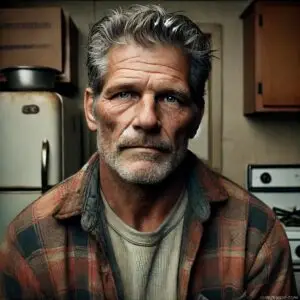
Character Study: George Taylor
Overview
Name: George Taylor
Age: Late 50s
Role in the Series: Maddie’s estranged father, serving as both a reflection of Maddie’s fears and a catalyst for her growth. George embodies the complex dynamics of regret, redemption, and the struggle to break free from cycles of generational trauma.
Background:
Personality:
Physical Appearance:
Subtextual Traits for the Actor:
Casting Guide
Essential Qualities:
Potential Actors:
Key Character Moments in Season One
Motivational Notes for the Actor
Symbolism
George represents the weight of the past and the potential for redemption. His journey mirrors Maddie’s in many ways, both struggling to break free from cycles of pain while striving to build a better future for the next generation.
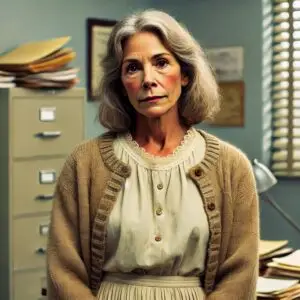
Character Study: Janice Howard
Overview
Name: Janice Howard
Age: Late 40s
Role in the Series: Social Worker at a community resource center in Parkersburg, serving as a crucial support figure for characters like Maddie. Janice represents the unsung heroes within broken systems, tirelessly advocating for those most affected by poverty, addiction, and instability.
Background:
Personality:
Physical Appearance:
Subtextual Traits for the Actor:
Casting Guide
Essential Qualities:
Potential Actors:
Key Character Moments in Season One
Motivational Notes for the Actor
Symbolism
Janice represents the quiet resilience of those who work behind the scenes to hold communities together. Her character embodies both the hope and heartbreak of fighting for change within systems designed to resist it.
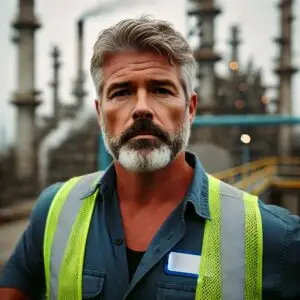
Character Study: Frank Delaney
Character Profile
Name: Frank Delaney
Age: 52
Role in the Series: Refinery Supervisor, serving as a pivotal figure in the storyline surrounding the refinery explosion. Frank embodies the complex dynamics of systemic neglect, personal guilt, and the burden of leadership within an environment marred by corporate indifference.
Background:
Personality:
Physical Appearance:
Subtextual Traits for the Actor:
Casting Guide
Essential Qualities:
Potential Actors:
Key Character Moments in Season One
Motivational Notes for the Actor
Symbolism
Frank represents the human face of systemic failure—a man caught between corporate greed and the safety of his community. His character is a study in the cost of compromise and the possibility of redemption through accountability and truth.

Character Study: Vanessa “Nessa” Carter
Overview
Name: Vanessa “Nessa” Carter
Age: 29
Role in the Series: Ryan Brody’s ex-girlfriend and the mother of his child. Vanessa is a pivotal character who embodies the challenges of single parenthood while navigating the lingering emotional ties to a past marked by love, loss, and personal growth.
Background:
Personality:
Physical Appearance:
Subtextual Traits for the Actor:
Casting Guide
Essential Qualities:
Potential Actors:
Key Character Moments in Season One
Motivational Notes for the Actor
Symbolism
Vanessa symbolizes the resilience required to rebuild a life after heartbreak. She represents the tension between holding on and letting go, embodying the struggle to find closure while navigating the complexities of love, guilt, and personal growth.

Character Study: Oliver Brody
Overview
Name: Oliver “Ollie” Brody
Age: 5
Role in the Series: Oliver serves as an emotional anchor in the series, embodying innocence amidst the chaos surrounding addiction and family dysfunction. His interactions highlight the ripple effects of adult choices on children, making him a poignant symbol of hope and vulnerability.
Background:
Personality:
Physical Appearance:
Subtextual Traits for the Actor:
Casting Guide
Essential Qualities:
Potential Actors:
Key Character Moments in Season One
Motivational Notes for the Actor
Symbolism
Ollie represents the fragile hope that persists despite adversity. His presence underscores the long-term impact of adult decisions on children, serving as a silent witness to the cycles of addiction, neglect, and the enduring possibility of love and redemption.

Character Study: Jamiaquan “Slim” Carson
Overview
Name: Jamiaquan “Slim” Carson
Age: Late 20s
Role in the Series: Ryan’s Dealer, a street-smart, opportunistic antagonist whose actions reveal the systemic grip of addiction and exploitation in Parkersburg. Slim operates as both a direct threat and a symbolic figure representing the predatory nature of the drug trade.
Background:
Personality:
Physical Appearance:
Subtextual Traits for the Actor:
Casting Guide
Essential Qualities:
Potential Actors:
Key Character Moments in Season One
Motivational Notes for the Actor
Symbolism
Slim represents the insidious, human face of systemic exploitation—a man both shaped by and perpetuating the cycle of addiction and desperation. His character is a lens through which the series explores the thin line between victim and predator in environments defined by neglect and survival.

Character Study: “Brick” (Supplier Enforcer)
Overview
Name: TBD (Nickname: “Brick”)
Age: Mid-20s
Role in the Series: Supplier Enforcer, serving as the physical embodiment of intimidation and control within the Supplier’s operation. Brick is a tool of fear, ensuring compliance through brute strength and unwavering loyalty driven by fear and survival instincts.
Background:
Personality:
Physical Appearance:
Subtextual Traits for the Actor:
Casting Guide
Essential Qualities:
Potential Actors:
Key Character Moments in Season One
Motivational Notes for the Actor
Symbolism
Brick represents the brutal, dehumanizing machinery of the drug trade—a man reduced to his utility as a weapon. His character explores themes of identity, purpose, and the fragile nature of power built on fear and violence.
Series Title: No Clear Sky
Genre: Drama, Crime, Psychological Thriller
Setting: Parkersburg, WV, a small, economically strained town overshadowed by addiction, systemic failure, and personal battles.
No Clear Sky is an unflinching exploration of the human cost of addiction, poverty, and systemic neglect in a struggling town. The series follows intertwined lives: Ethan McAllister, a conflicted college student moonlighting as a drug dealer; Maddie Taylor, a single mother fighting for stability; Liam Brody, a determined cop haunted by personal failures; and Erin Caldwell, a paramedic battling burnout and addiction. Each character faces moral dilemmas that blur the lines between victim and perpetrator, hope and despair. Through raw storytelling and emotionally charged scenes, No Clear Sky reveals the fragile threads connecting broken lives, where even the faintest glimmer of hope fights to break through the darkness.
Ethan McAllister juggles his double life as a college student and drug dealer, supplying those he silently pities. Maddie Taylor struggles to shield her daughter, Lily, from the harsh realities of poverty while enduring exploitation at work. Their lives, shaped by systemic failures, mirror the crumbling infrastructure of Parkersburg. The episode ends with a chilling encounter between Ethan and his ominous supplier, hinting at the dangerous web he’s trapped in.
Paramedic Erin Caldwell is introduced, battling addiction and burnout while saving lives she secretly relates to. Officer Liam Brody wrestles with family estrangement and systemic apathy within the justice system. As their paths cross with Ethan and Maddie, the growing drug crisis becomes a personal battlefield. Ryan Brody, Liam’s brother, resurfaces with a plea for help, igniting conflicts rooted in guilt and addiction.
Ryan’s downward spiral accelerates, culminating in a harrowing overdose that exposes the fragility of second chances. Judge Sanders faces mounting pressure both in court and at home, grappling with his daughter Natalie’s rebellion. Liam’s desperation to save Ryan intensifies, while Ethan’s moral conflict deepens, tethering him closer to a life he detests. The episode ends with Ryan flatlining, leaving his fate uncertain.
A catastrophic refinery explosion becomes both a literal and symbolic eruption, exposing deep-rooted vulnerabilities within the community. Erin pushes her limits amidst the chaos, Maddie faces the looming threat of eviction, and Liam’s investigation into the drug network intensifies. As the town reels from the tragedy, personal crises mirror the city’s smoldering wreckage.
The refinery’s aftermath ripples through every storyline. Ethan grows paranoid under his supplier’s tightening grip, Maddie fights systemic indifference to secure shelter for Lily, and Erin’s emotional walls begin to crumble. Liam faces bureaucratic obstacles in his pursuit of justice, forcing him to question the integrity of the very system he serves.
Relationships strain under the weight of personal secrets and public failures. Ethan struggles with the dangerous consequences of his choices, Ryan battles addiction’s relentless pull, and Maddie takes precarious steps toward stability. Liam’s obsession with dismantling the drug network drives him to risk everything, blurring the line between duty and vengeance.
Betrayals come to light as Ethan’s covert cooperation with Liam is nearly exposed. Ryan grows suspicious, igniting volatile confrontations. Maddie faces her estranged father, forced to reconcile past wounds for the sake of her daughter. Erin reaches a fragile turning point in her recovery journey. The fragile threads holding their lives together begin to unravel.
The series plunges into darkness as Erin succumbs to her inner demons, taking her own life. Ryan’s overdose devastates Liam, fueling his rage and guilt. Maddie stands at a crossroads, forced to make critical decisions about Lily’s future. Ethan’s life spirals dangerously as his cover edges toward exposure. Amid tragedy, fleeting moments of resilience shine through.
Haunted by loss, Liam embarks on a reckless, unsanctioned mission to dismantle the drug network. Ethan faces imminent danger as the supplier’s suspicions reach a boiling point. Maddie fights to reclaim agency over her life, balancing hope with harsh reality. As grief and desperation collide, each character confronts the abyss within themselves.
The season culminates in explosive confrontations. Liam risks everything in a violent showdown with the supplier. Ethan’s betrayal comes to light with devastating consequences. Maddie secures a fragile future for Lily, embodying the series’ persistent undercurrent of hope. Amidst the wreckage of broken lives and fractured systems, the faintest threads of redemption and resilience endure, promising that even under a clouded sky, light can still find a way through.
No Clear Sky Webisodes (ACT I)
Experience the gripping, raw narrative of No Clear Sky in its webisode format. ACT I delves into the fractured lives of Parkersburg’s residents, exploring themes of addiction, resilience, and the fight for redemption.
Click here to download

No Clear Sky is a raw and poignant drama set against the industrial and struggling backdrop of Parkersburg, West Virginia. Through interconnected stories of despair, resilience, and redemption, the play explores the harsh realities of life in a town grappling with addiction, poverty, and fractured relationships.
The narrative follows four main characters as they navigate their personal battles:
Erin Caldwell, a paramedic burdened by the lives she couldn’t save and consumed by her own struggles with alcoholism, teeters on the edge of her breaking point. Her profession forces her to confront the devastation of addiction daily, but it is her inner demons that pose the greatest threat.
Maddie Taylor, a single mother working as a dancer in a seedy strip club, fights to provide for her bright and hopeful daughter, Lily. Maddie’s estranged relationship with her family and her exploitative work environment push her toward a difficult decision that could change their lives forever.
Liam Brody, a police officer driven by a sense of justice, wrestles with the guilt of his brother Ryan’s downfall into addiction and petty crime. As he works to dismantle the local drug trade, Liam must confront his own limitations and the deep scars within his family.
Ethan McAllister, a young man caught in the grip of Parkersburg’s drug trade, seeks redemption after making devastating choices. His determination to do the right thing leads him into a dangerous spiral, threatening his life and the lives of those around him.
The play weaves these stories together through a series of charged and emotional scenes, highlighting the complex intersections between its characters. From Erin’s harrowing descent into despair to Maddie’s desperate hope for a better future, No Clear Sky captures the raw humanity and enduring strength of people fighting to survive under oppressive circumstances.
Ultimately, the title serves as a metaphor for the characters’ lives, where moments of light and clarity are rare but deeply cherished. No Clear Sky is a story of resilience and the faint, flickering hope that even under the weight of a stormy sky, redemption and connection are still possible.
The play is crafted as a Three-Act Structure, intensifying the characters’ emotional arcs and interwoven storylines:
Introduces the main characters and the town of Parkersburg, revealing systemic issues of addiction, poverty, and fractured relationships.
Establishes personal struggles, such as Ethan’s dealings, Maddie’s fight for stability, Liam’s moral conflicts, and Erin’s burnout.
Themes of denial, avoidance, and suppressed hope emerge as the characters face decisions that will ripple through the rest of the play.
Escalates conflicts as characters confront their personal failures and external threats.
Erin’s mental health deteriorates, Maddie’s financial pressures intensify, Liam’s investigation exposes corruption, and Ethan’s double life reaches a breaking point.
The tension builds toward an inevitable collapse, exposing the fragility beneath each character’s survival mechanisms.
The fallout from devastating choices and systemic failures unfolds.
Erin’s tragic descent, Ryan’s overdose, Maddie’s desperate choices, and Ethan’s dangerous entanglements bring raw, emotional confrontations.
Despite heartbreak and loss, threads of resilience and fragile hope remain, symbolizing that even in the darkest places, flickers of light persist.
Themes: Addiction, poverty, systemic failure, family dynamics, mental health, redemption, and the quiet resilience of those surviving in the margins.
Tone: Gritty, raw, and unflinching, yet punctuated by moments of profound humanity and tenderness.
The play adaptation strips the story down to its raw, emotional core, focusing on intimate character moments that highlight the deeply personal impact of societal collapse. The stage’s constraints amplify the human struggle, making the characters’ pain, love, and fragile hope feel immediate and visceral.
Setting: Parkersburg, West Virginia, with scenes shifting between cramped apartments, seedy clubs, sterile hospital rooms, and shadowed alleyways.
Design: Minimalist, symbolic set pieces that emphasize emotional intimacy over elaborate scenery. Stark lighting contrasts to reflect emotional isolation and fleeting warmth.
Sound Design: Ambient refinery hums, distant sirens, rain, and a recurring haunting piano melody to underscore emotional beats.
Experience the raw, emotional journey of No Clear Sky as a Three-Act Play.
This stage adaptation strips the story down to its core—focusing on intimate character moments and the personal impact of addiction, poverty, and resilience within the heart of Parkersburg, West Virginia. Whether you’re a theater enthusiast, director, or simply a fan of the story, the full script is available for you.
Download No Clear Sky – The Play (PDF)
Press the button above to download the full play script.
Are you an industry professional, producer, investor, or content creator interested in learning more about No Clear Sky or exploring potential collaboration opportunities?
We welcome inquiries regarding:
Contact Us:
Reach out directly to the EbonQuill Productions team through our Professional Inquiry Form to the right, or email us at [email protected] to discuss how together we can bring No Clear Sky to new audiences.